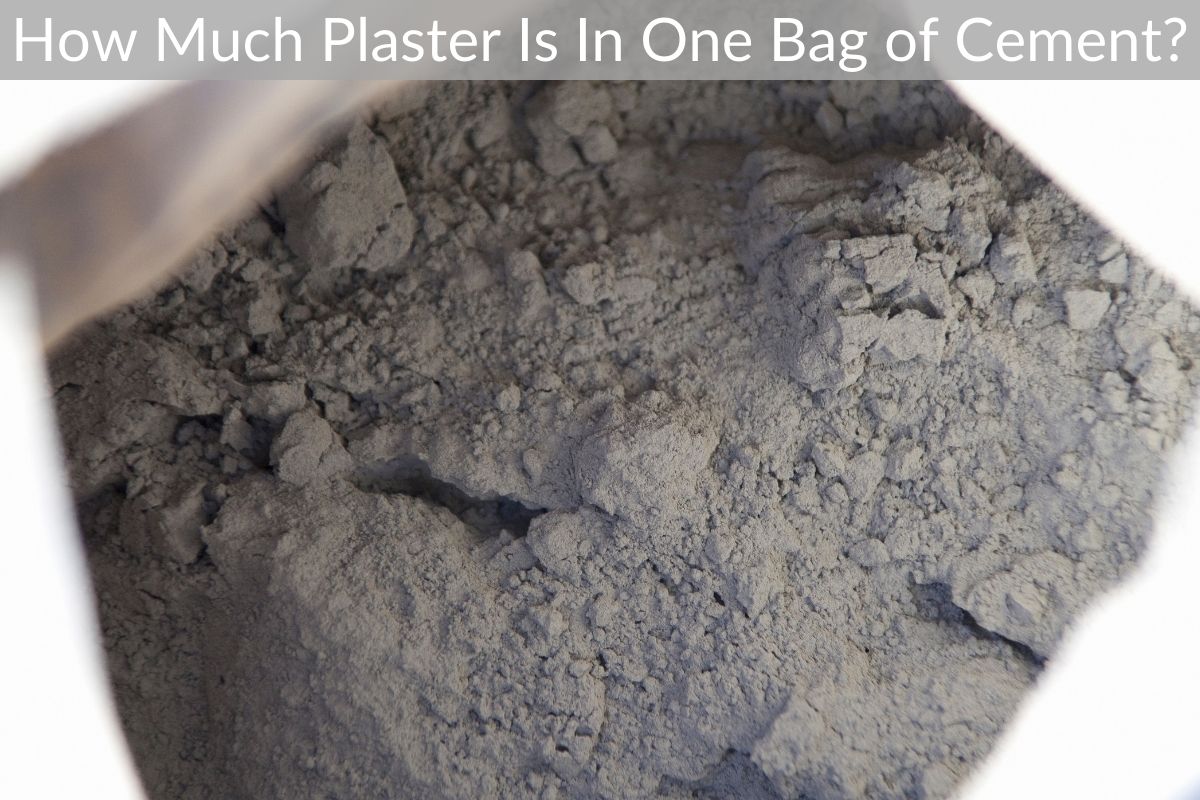This post may contain affiliate links. As an Amazon Associate we earn from qualifying purchases.
You may have wondered how much plaster is in a bag of cement. In this article, you will learn how to determine how much cement you will need for plastering. In addition, you will learn how to calculate the ratio of cement to sand. Lastly, you will discover how much cement costs for a parlor/living room.
You may also be interested in other factors that can influence how much cement you buy. Listed below are some tips to help you decide how much you need.
Calculating quantity of cement required for plastering
The most accurate method of calculating the required quantity of cement for plastering is the Dry Loose Bulk Density method. This method does not consider sand bulkage, and water is added to the plaster mixture at 20% of the dry weight to achieve the desired workability. This calculation will result in a quantity of cement and sand equivalent to 56/0.153 x 0.12 cubic metres, or 44 litres of water. The final quantity will be slightly higher than the arrived quantities.
To calculate the amount of cement to use in plastering, you need to know the wall and ceiling dimensions of your walls. The next step is to enter the cement-to-sand ratio and the thickness of the plaster. Then, you can enter all of the relevant data to get the area of plastering. The formulas for plastering and other building work will take these factors into consideration and give you the correct mix ratio.
Plastering is usually done in two layers. The first layer is usually twelve millimeters thick, but may vary from twelve to fifteen millimetres. The second layer is about eight millimeters thick. The ratio of cement to sand in a plastering job should be 1:3 or greater. This is also known as a finish coat. If you are preparing for a repair job, the ratio of cement and sand should be one:4 or even higher.
The formula for cement-to-sand ratio depends on the type of plastering work you are doing. Depending on the type of plastering material used, the ratio between the two will vary from one plaster to another. For example, in a plaster job, twenty percent of the cement and five percent of the sand should be applied to fill joints and uneven areas. Similarly, the proportion of cement and sand should be one:5 or higher.
In addition to cement, sand and water should be properly mixed to make a lump-free slurry. The cement-sand ratio should be at least two:5 in case of masonry work. For plastering at heights greater than 10 m, it is important to use a chemical mixture of two:5 cement and fifteen percent water. Using a spray pump, the plastering mix should be applied to limited areas and should be dry for at least 6 hours before the application of the plaster. Once the mortar dries, the walls should be prepared. Once the wall is dry, the next step is to fix dots at two-metre distances. Then, use a plumb-bob to check for verticality.
A typical bag of cement contains 50 kg of cement. One cubic metre of plastering requires 0.154 kg of cement per square metre. However, a large amount of cement is used to make a single plastering job. Therefore, a small quantity of cement is required for a 20mm thick plaster. To get a ballpark figure, the average brick size is 190x90mm. By comparison, a single brick requires 0.2627 cubic metre of plastering material.
Mix ratio of cement and sand
To make a concrete mix, combine equal parts of sand and cement. For medium-duty projects, use one part cement to two parts sand. Heavy-duty projects, such as large planters, require a higher proportion of aggregates. For example, a large planter will require thick sides and a thick bottom. For a heavy-duty project, use a ratio of one part cement to three parts sand.
A traditional mix ratio of one part cement to six parts sand is used for brickwork, and a ratio of one part cement to four parts sand is used for exterior walls. In the UK, a more common ratio of one part cement to four parts sand is used for plastering. For repairs, however, the ratio should be 1:3, or a slightly larger ratio. The correct ratio of cement and sand for concrete is a critical component of any project.
Cement and sand ratios are determined by the desired strength and use. Typically, a cement-to-sand ratio of one part cement to four parts sand is used for blockwork. Brick work requires a cement-to-sand ratio of one part cement to six parts sand. When mixing mortar, be sure to follow the manufacturer’s recommendations. You’ll be surprised how often you have to adjust the mix to meet the requirements of the job.
In addition to mixing concrete with a mixer, you can also use a mixing pump. Using the proper concrete pump will help minimize waste and increase your productivity. A concrete mix ratio should be as close to 1:1 as possible. Once you’ve established a standard, you can make sure that consistency is achieved on every project and minimize waste. You can follow the guidelines for concrete mix ratio to ensure success on any job.
Cost of cement for a parlor
The cost of cement in a parlor is usually determined by the amount of room space. A parlor can be quite large, so you should plan the cement consumption accordingly. For example, a parlor that seats four or five people may require about N60,000 for plastering. In addition to cement, you’ll also need steel and wood for the building’s infrastructure. Then, there are additional costs for ventilation and drainage, water supply, and electrical wiring.

